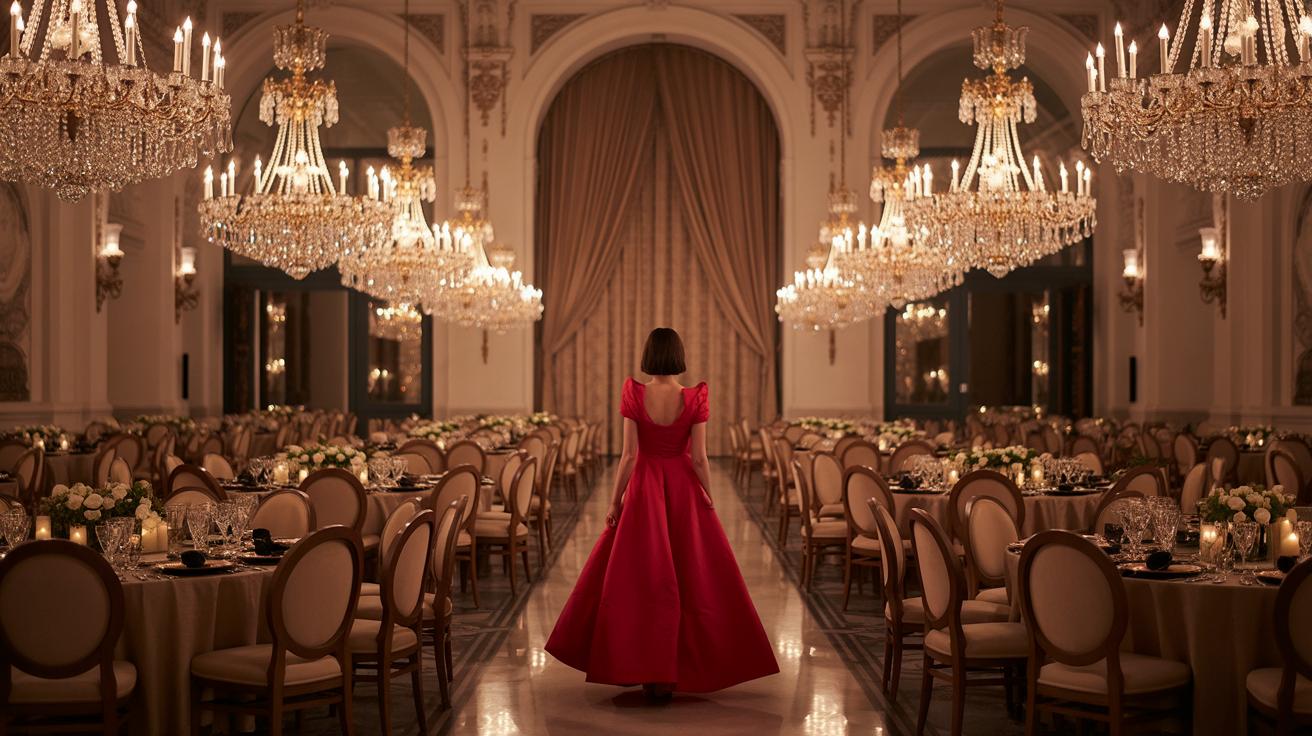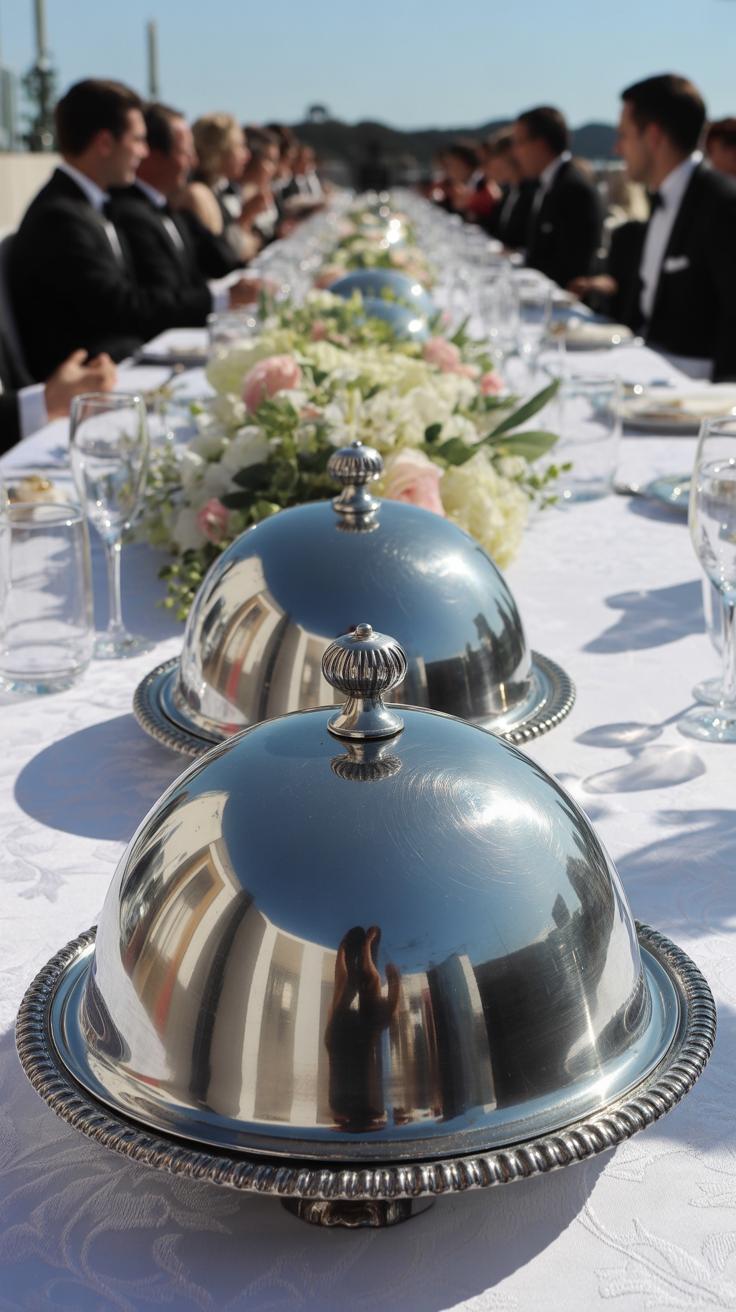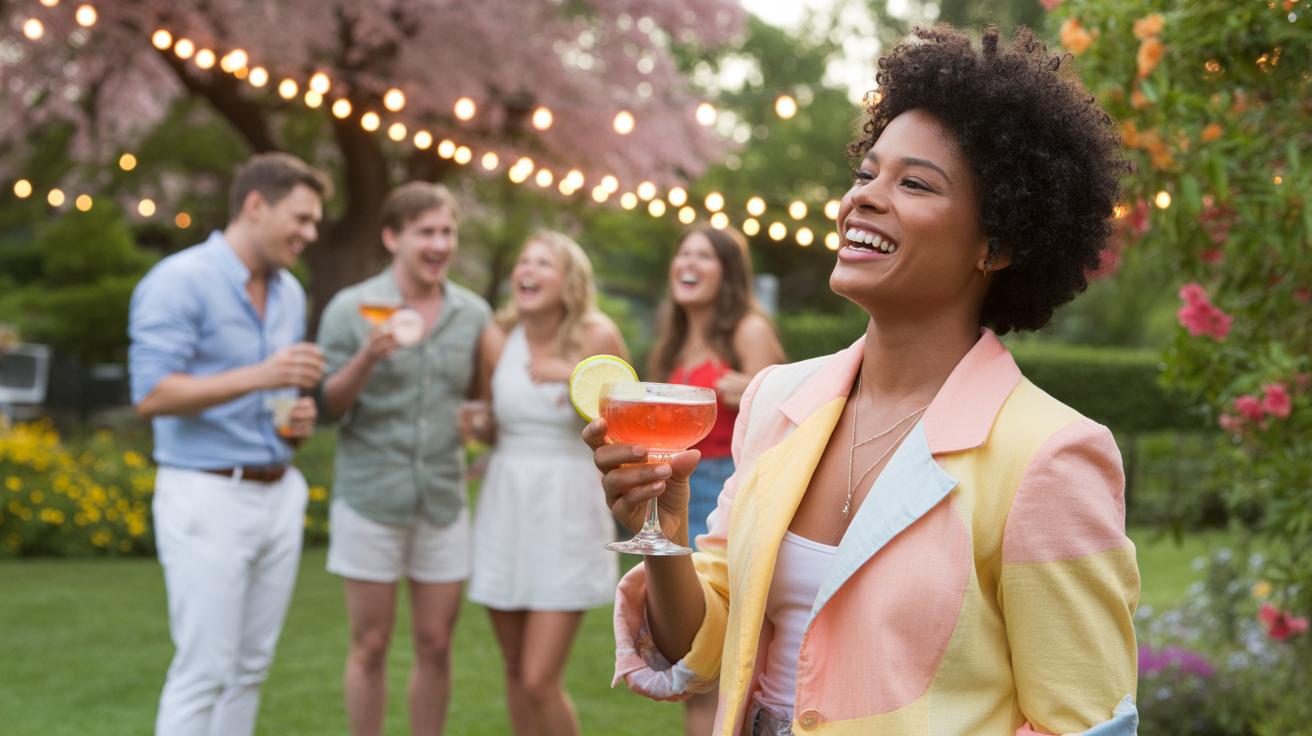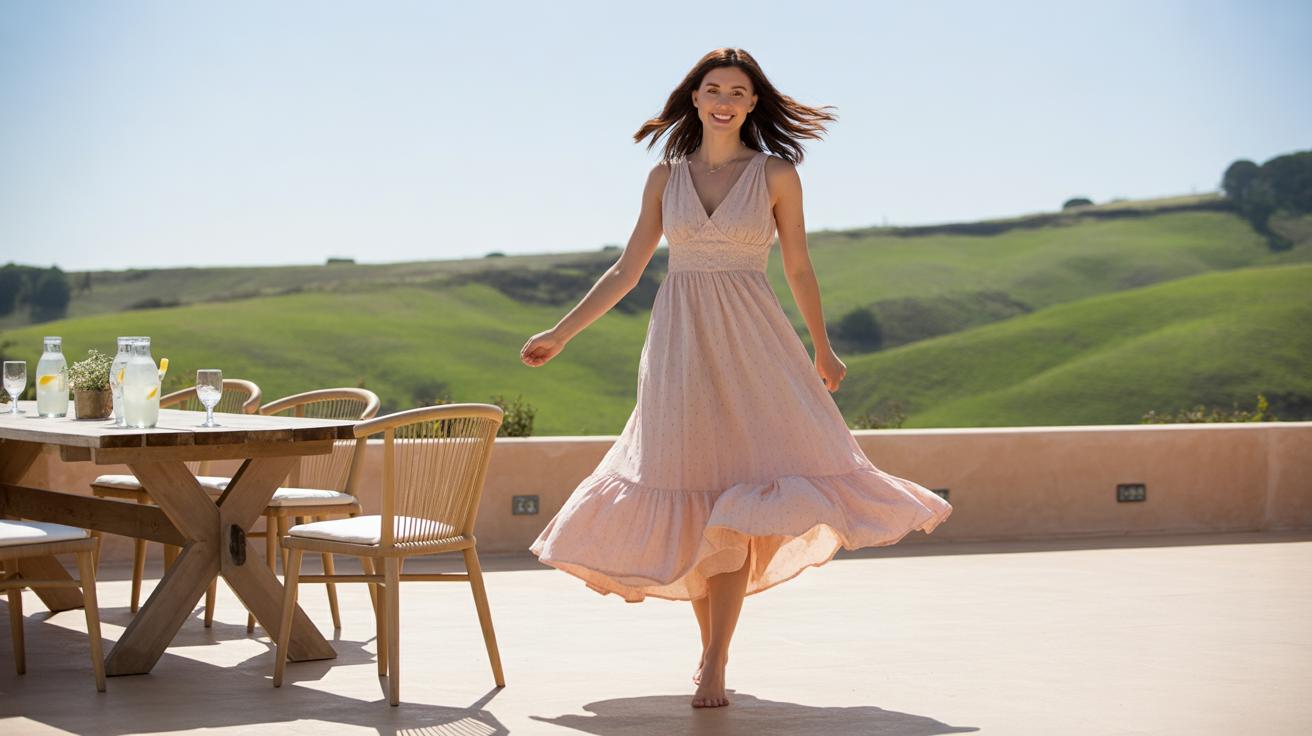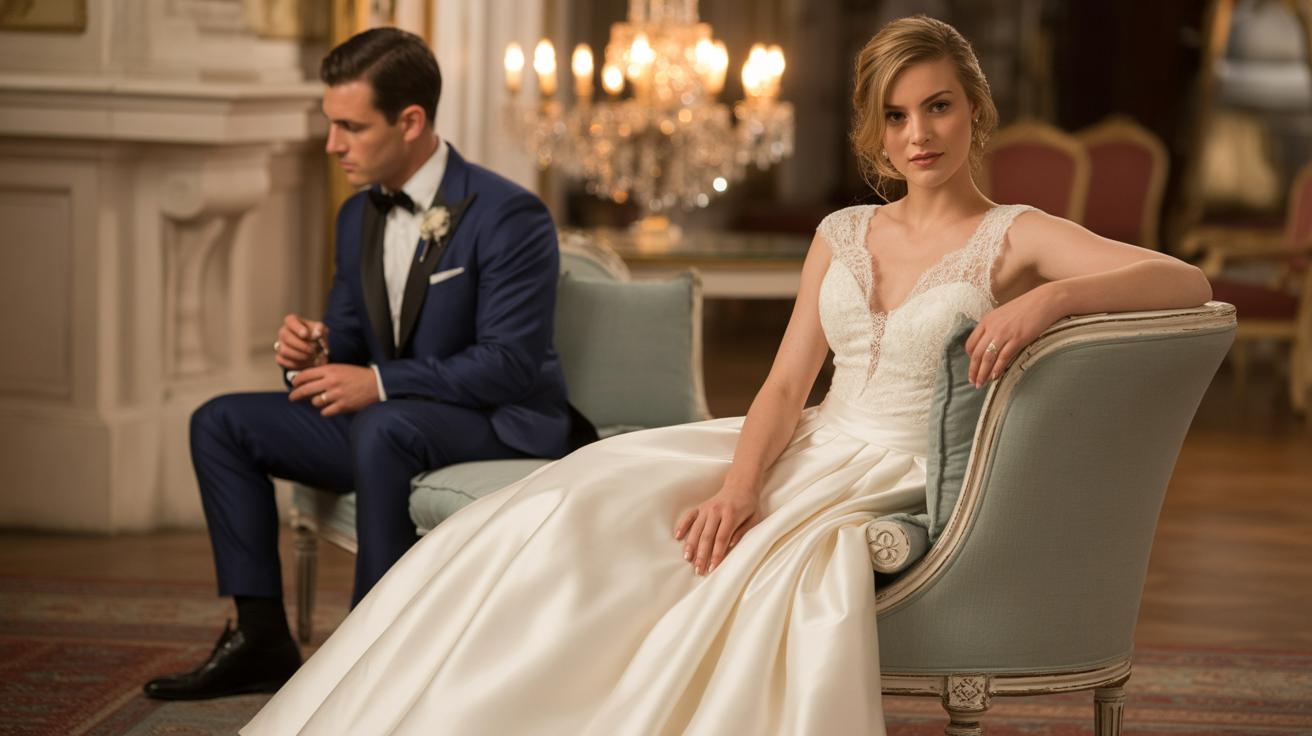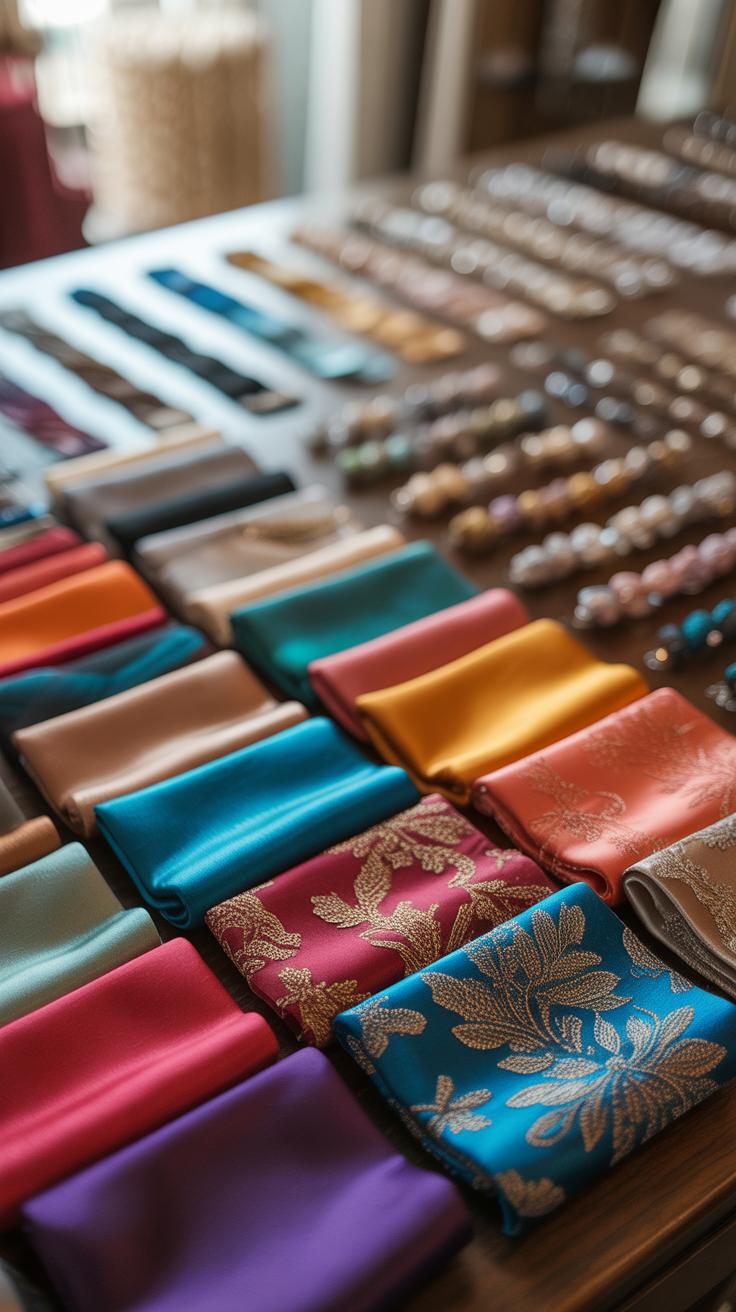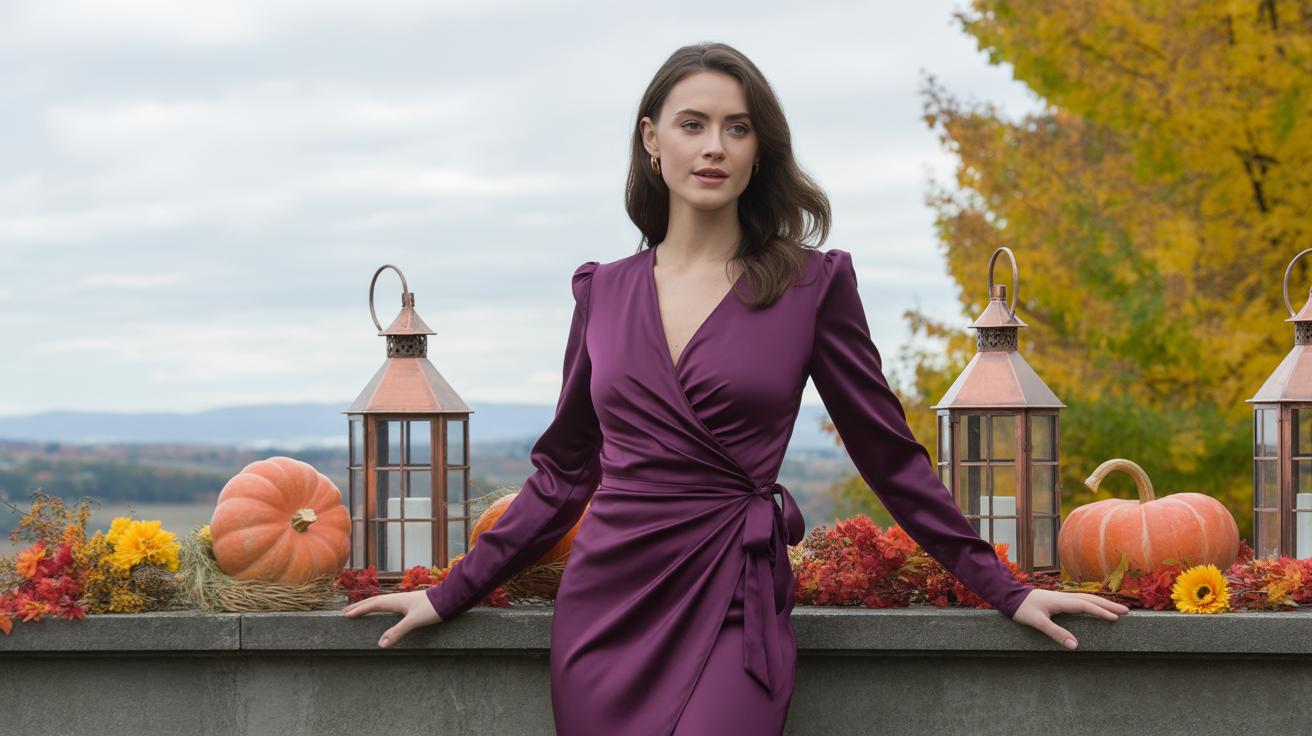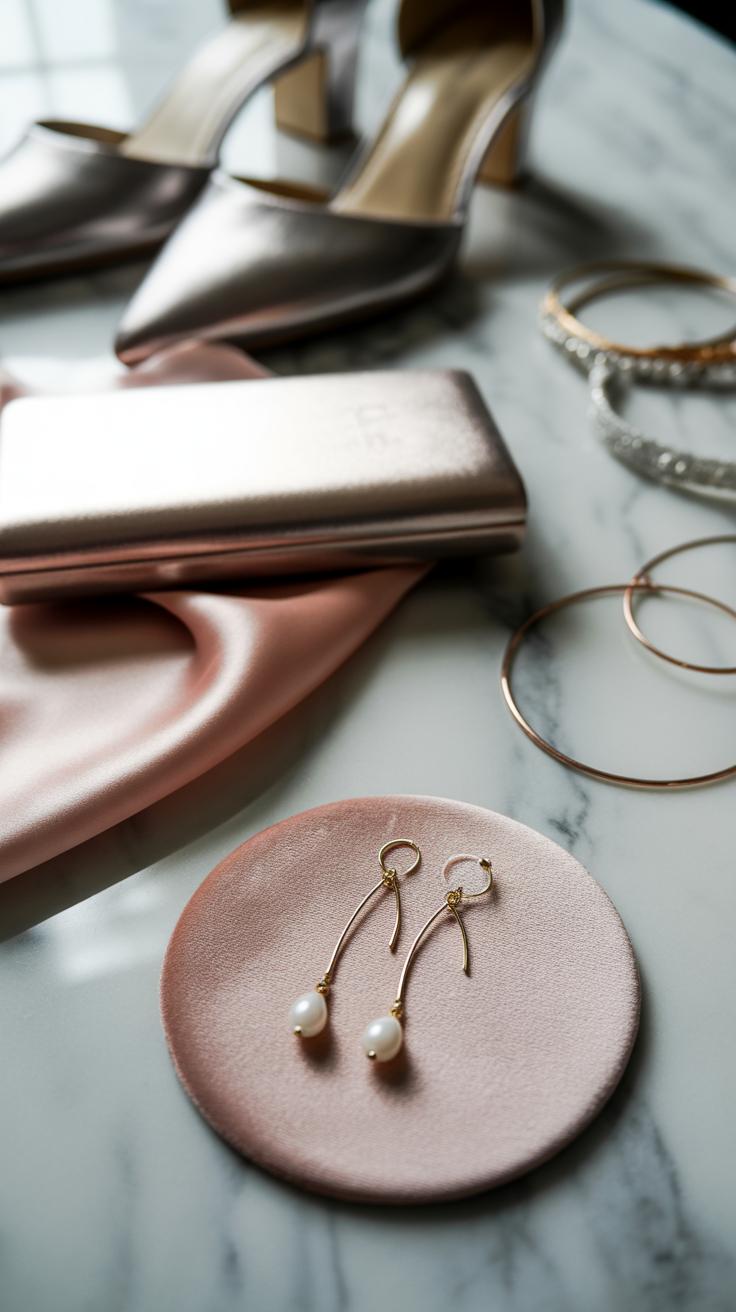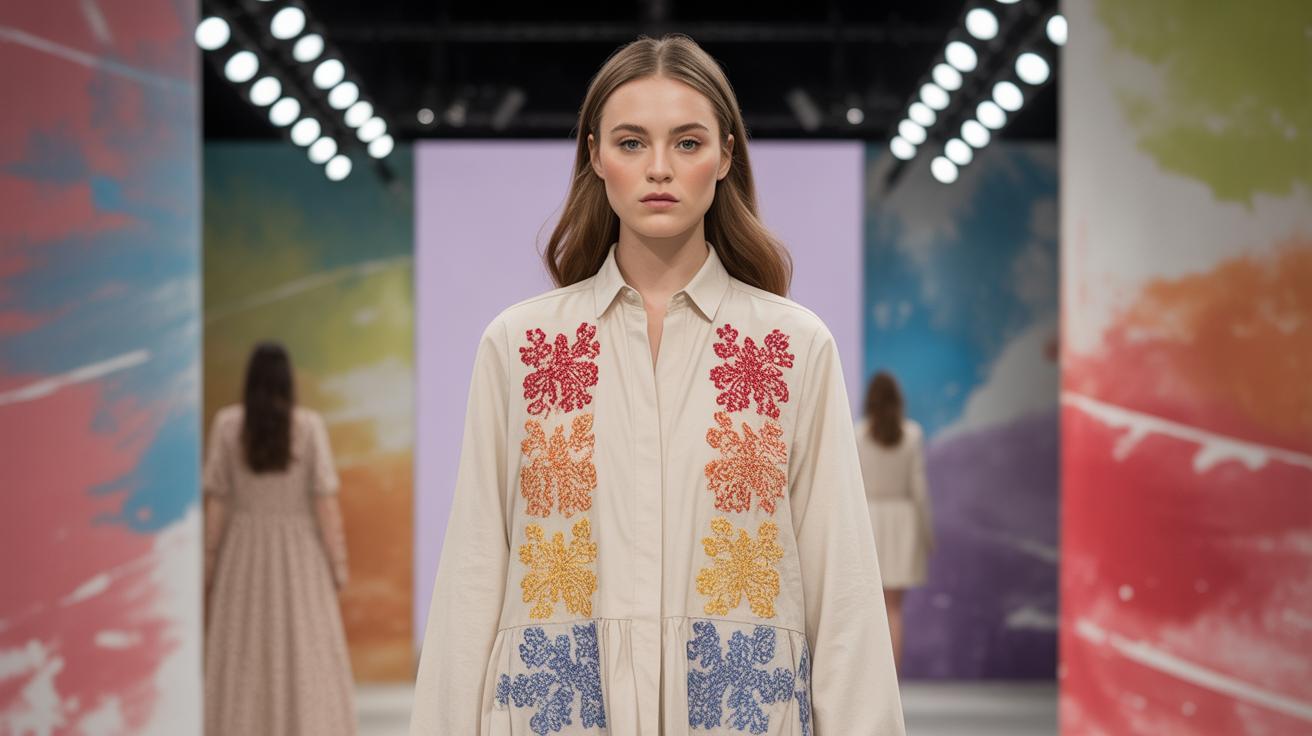Introduction
Banquet dresses play a key role in your appearance at formal meals and large social gatherings. These events offer a chance to stand out by selecting a dress that suits the occasion, the venue, and your personal style. Your choice of dress can influence how others perceive you and your confidence throughout the banquet. Understanding the type of banquet and its formality helps you pick an appropriate dress. Immense attention to the material, color, and fit creates a lasting impression that speaks volumes about your taste.
Beyond aesthetics, your banquet dress must balance comfort and elegance for hours spent seated and socializing. With many styles to explore, knowing what works best for your body type and the event’s mood is essential. You will find useful pointers on selecting and accessorizing a banquet dress to keep all eyes on you. This guide helps you navigate choices smartly, ensuring your dress commands attention in any hall.
Understanding the Purpose of Banquets
Banquets are formal meals designed to bring people together to celebrate or honor a special event or individual. They often mark important moments, like weddings, achievements, or fundraisers. Some banquets focus on socializing, while others have a ceremonial or charitable goal.
Social banquets, such as weddings or holiday gatherings, focus on connection and joy. Ceremonial banquets, like award dinners, highlight respect and recognition. Charity banquets aim to raise awareness and funds for causes. Each type demands a certain level of formality in dress to match the event’s tone.
How you present yourself matters. Dressing well helps reinforce social bonds and shows respect for the event and the people involved. It can also enhance the host’s prestige, reflecting the event’s importance. When you understand this, you can choose a dress that fits the occasion and speaks for you in any hall.
Types of Banquets
Weddings often call for elegant dresses that balance tradition and personal style. Corporate dinners usually require formal or business attire that projects professionalism. Charity events may vary more in style but lean towards sophistication to honor the cause. Award ceremonies often ask for glamorous gowns to match the celebration’s high status.
Each banquet type has different expectations for dress codes. Some might specify black tie, while others allow semi-formal or cocktail attire. Knowing the type of banquet you will attend helps you pick the right dress without overdoing or underdressing. Have you checked the dress code for your next big dinner?
Importance of Appropriate Dress
Your choice of clothing affects how others perceive you in formal settings. Appropriate attire shows respect for the host and the event’s purpose. It helps you fit in smoothly and engage confidently with others.
Choosing a dress that suits the occasion is part of good social etiquette. It can open doors for meaningful conversations and leave a lasting positive impression. Imagine attending a corporate banquet in casual wear—would it give the message you want?
How do you want to be remembered at your next banquet? The right dress supports your presence and can signal your attention to detail and respect for social customs.
Choosing the Right Banquet Dress Style
Long gowns remain a staple for grand banquets, offering a look that suits highly formal events. They create a refined silhouette that matches the elegance expected in ceremonial or charity galas. Cocktail dresses work well for less formal banquets, such as social gatherings, providing a balance between style and ease of movement. Modern sleek designs, with clean lines and simple shapes, appeal if you want a minimalist yet striking appearance. These styles often fit well at trendy or modern banquet settings.
Your choice should reflect the banquet’s dress code but also your comfort. If you have a pear-shaped body, A-line gowns draw focus upward, while hourglass figures shine in form-fitting dresses. For apple shapes, empire waists can create balance. Think about what feels right for you, because feeling confident influences how others perceive you. What style lets you step into the room and claim attention without hesitation?
Classic versus Contemporary Styles
Traditional banquet gowns usually feature fuller skirts, lace, or embroidered details. These dresses embody timeless elegance and often suit very formal or ceremonial banquets. If you prefer a look that lasts beyond trends, classic gowns may align with your taste. Contemporary styles, however, lean toward clean cuts, minimal ornamentation, and edgy details like cutouts or asymmetric hems.
Choosing between classic and modern depends on the image you want to present. Do you want to honor tradition, or express current fashion? Both paths offer ways to stand out. Pair classic gowns with delicate accessories, and modern dresses with bold jewelry or sleek hairstyles. How do you want to balance respect for the event with your personal style?
Fitting Your Body Type
Identifying your body type helps you select a dress that flatters your shape and boosts your confidence. If you have a pear shape, opt for dresses that emphasize your waist and shoulders while flowing over the hips. For rectangular body types, choose styles that add curves, like dresses with peplum details or ruffled skirts. Apple shapes look great in dresses that flow away from the midsection, highlighting legs or neckline.
Try dresses in different cuts before the event and move around to test comfort. A dress may look stunning on a hanger but feels different when worn. What combination of stretch, structure, and style makes you feel both comfortable and commanding attention? Finding that balance is key to owning the room during any banquet.
Selecting Colors and Fabrics for Impact
Color Psychology in Banquet Dresses
Colors speak without words. At a banquet, the shade of your dress shapes how others see you and feel around you. Red signals confidence and energy, perfect for lively celebrations or making a bold statement. Blue suggests calm and trust, fitting for formal or professional gatherings. Black conveys elegance and seriousness, choosing this color can give you a timeless presence. Soft pastels like blush or lavender feel gentle and approachable, suited for daytime or casual banquets. Consider your personality when picking a color. Do you want to stand out or blend in with grace? Matching your dress color to the event’s mood sets the right tone. What message do you want your dress to send? Your choice can change the entire energy you bring to the room.
Choosing Comfortable Fabrics
Your dress fabric controls not only the look but also how you feel during the event. Satin shines with smoothness and luxury, but it can trap heat and feel heavy. Chiffon flows lightly and breathes well, keeping you comfortable through long hours. Velvet feels rich and warm, ideal for cooler seasons, but it can weigh you down. Lace offers delicate texture and visual interest but may not be as soft against the skin. Think about your climate and how active you’ll be at the banquet. Would you rather prioritize elegance or ease? Choose fabrics that balance comfort with style to help you move freely and stay confident all night. How your dress feels can shape your entire experience.
Fitting and Tailoring for a Polished Look
A banquet dress that fits well enhances your entire appearance. It supports good posture, allowing you to move gracefully and confidently through the event. Clothes that are too tight restrict movement and create discomfort. Dresses that are too loose appear sloppy and can make you feel less confident.
Knowing your measurements is key. Use a soft tape to measure your bust, waist, hips, and even your height. Try on the dress and check areas where fabric pulls or sags. Move around in it to spot tight seams or loose sleeves. Ask yourself, does the dress sit flat on your body without pinching or bunching?
Minor tailoring can transform how your dress looks and feels. Hemming the skirt to suit your height prevents tripping and gives a clean line. Taking in side seams can slim the dress for a sleek silhouette. Adjusting necklines can open up the look and better frame your face. These simple changes create a dress that feels made for you.
Why Fit Matters
A well-fitting dress changes how you carry yourself. When your dress fits right, you stand taller and your shoulders naturally relax. This improves your posture and helps you exude confidence without even trying.
Choosing a dress that is too tight limits your breathing and movement. It can draw attention for the wrong reasons, such as visible strain on fabric or unflattering creases. Dresses that are too loose often lose shape and cause your figure to disappear. Are you comfortable standing and sitting in your dress for several hours?
Fit influences your entire presence at a banquet, from greeting guests to dancing. Your goal should be a dress that supports your body and boosts your confidence.
Simple Tailoring Tips
Simple tweaks make a big difference in how your dress fits and looks. Hemming the skirt to your exact length keeps the dress from dragging and ensures your shoes show at the right height.
Taking in the side seams or darts can contour the dress to your waist and bust. This adjustment prevents loose fabric and emphasizes your shape. Necklines can be raised or lowered to suit your comfort and style. Adjusting straps or adding cups can secure support without bulk.
Try these alterations before the banquet to save stress on the day. Have you considered visiting a local tailor for a quick fitting and expert advice? Tailoring helps your dress become uniquely yours and makes sure you feel prepared to stand out in any hall.
Accessorizing Your Banquet Dress
Your banquet dress sets the stage, but accessories bring the look together. Choosing the right accessories helps create a balanced and polished outfit that turns heads for the right reasons. You want the jewelry, shoes, and clutch to enhance your dress, not steal its spotlight.
When selecting accessories, consider the colors and styles of your dress. If your dress is bold or heavily embellished, keep your accessories simple to avoid clashing. For a simpler dress, accessories can be the chance to add a pop of color or sparkle without overwhelming the overall look.
Think about the venue and how much attention you want to draw. Accessories should support your style and confidence. Does the color of your shoes match a detail on your dress? Can your jewelry highlight the neckline without competing for attention? Maintaining cohesion helps your outfit feel intentional and complete.
Selecting Jewelry
Jewelry should complement your banquet dress’s color and style. For a dress with detailed patterns or heavy fabrics, choose smaller, understated earrings or a simple pendant. When your dress has a plain neckline, use statement necklaces or chandelier earrings to add visual interest.
Try matching metals to the dress’s color tone—silver jewelry works well with cool colors like blue or gray, while gold suits warm tones such as red or bronze. If your dress includes multiple colors, pick jewelry that matches the dominant shade. Avoid wearing too many pieces at once to keep the look uncluttered.
Ask yourself if each piece adds something important to the outfit. If a necklace competes with your dress neckline, switch to studs or a delicate bracelet instead. The goal is a clean, elegant look that feels balanced.
Shoes and Bags
Shoes should match your dress and provide comfort, especially if you will stand or dance for hours. Classic colors like black, nude, or metallic often pair easily with most outfits. If your dress has a unique color, consider shoes that pick up one tone from the dress or contrast softly without clashing.
Select a clutch or handbag that fits essentials such as your phone and lipstick. It should complement the color and material of your dress and shoes. For example, a sleek satin clutch works well with an elegant gown, while a beaded bag suits a simple dress needing some extra texture.
Comfort is essential—opt for shoes with manageable heel heights or cushioned insoles. Your bag should be easy to carry or hold so you remain relaxed. When the details of your shoes and bag echo each other, your ensemble will look more unified and thoughtful.
Dressing to Suit Different Banquet Venues
Banquet venues shape the way you choose your dress. Indoor ballrooms demand elegance that matches their formal setting. Outdoor garden banquets call for fabrics and styles that handle weather and terrain. Informal halls allow more relaxed looks while still maintaining a polished appearance.
Consider how lighting affects the colors and textures you wear inside. Soft, warm lighting in ballrooms can make rich fabrics like silk and velvet shine. In contrast, natural daylight outdoors highlights lighter colors and breathable fabrics.
Think about the floor surface too. High heels work well in smooth indoor settings but can sink into grass or gravel outside. You might want to switch to block heels or stylish flats when attending outdoor banquets.
Look beyond style and focus on the venue’s vibe. Is the hall grand or more casual? Does the event happen during the day or night? Your dress should feel in harmony with these details to help you stand out for all the right reasons.
Indoor Venues
Formal indoor banquets often happen in ballrooms with dim lighting and rows of seats. Choose dresses in fabrics like satin, chiffon, or lace to catch light and create an elegant glow. Structured designs with clean lines work well, avoiding too much volume that might feel bulky in tight seating.
Dark or jewel tones perform strongly under warm indoor light. Think deep blues, emerald greens, or classic black. A subtle shimmer can add just enough sparkle without competing with chandeliers or decor. Long gowns or cocktail dresses fit this setting perfectly.
Keep your dress comfortable for sitting and standing. Sleeves can add polish but need to allow for movement. Avoid fabrics that crease easily since you will be seated much of the time. Your goal is a look that impresses but doesn’t distract you from enjoying the event.
Outdoor Banquets
Outdoor venues present challenges like wind, uneven ground, and changing temperatures. Select fabrics that breathe and resist wrinkles, such as cotton blends, light silk, or soft jersey. Avoid heavy materials that trap heat or feel stiff in a breeze.
Think about practical lengths. A floor-length gown might drag on grass or dirt, so consider midi or tea-length dresses. Pair your outfit with low heels or dressy sandals to stay comfortable while walking.
Prepare for temperature shifts with layering options like a chic shawl or bolero. Bright or pastel colors often work well outside, reflecting daylight and blending with natural surroundings. Can you find a balance between functionality and elegance to shine outdoors?
Managing Comfort Through Long Banquet Events
Comfort plays a key role when you attend a banquet that lasts for hours. A dress that fits well prevents constant adjustments and avoids feeling tight or loose as the event goes on. Choosing breathable fabrics allows air to flow, keeping you cool and reducing sweat. Think about how the fabric feels against your skin. Natural fibers like cotton or linen often let you move easily and stay comfortable.
Temperature changes happen during banquets. If the venue gets chilly, a well-fitted shawl or wrap can keep you warm without ruining your look. Moving with ease matters, too. Pick a dress with enough room to sit, walk, and dance without strain. Avoid stiff materials or heavy layers that limit motion.
Comfort doesn’t end with the dress. Your shoes should support you when you stand or walk for long stretches. Balance style and comfort by choosing footwear designed for long wear. When you feel comfortable, you stay confident and focused on enjoying the event. How often do you check your outfit’s comfort before facing a long evening?
Breathability and Fabric Choice
Fabric choice impacts your comfort for many hours. Breathable materials allow air to circulate around your body. This reduces overheating and the chance of skin irritation. Fabrics like cotton blends, modal, and some silks work well for banquet dresses. They feel lighter and softer against the skin, helping you stay fresh.
Look for materials with some stretch. Stretch improves mobility and lets you sit or dance without feeling restricted. When you try on a dress, test how the fabric reacts when you move. Does it pinch? Does it wrinkle easily or cling uncomfortably? These are signs to keep looking elsewhere.
Also consider how the dress breathes in different parts. Dresses with mesh or lace panels let air flow better, especially around the shoulders or back. These details can give you a cooler, more comfortable experience during long events. Ask yourself: Will this fabric keep me comfortable even after hours?
Choosing Practical Shoes
Your footwear choice matters as much as your dress. Banquets often involve standing, walking, or dancing. Pick shoes with good arch support and cushioning to avoid sore feet. Avoid high heels if you know you won’t handle them well for long periods. Instead, look for block heels or low wedges that still look elegant but provide stability.
Try your shoes on before the event. Walk around your home to see if they cause blisters or discomfort. Insoles can add extra comfort. Consider shoes with adjustable straps for a better fit. Keep the style in harmony with your dress, but never sacrifice comfort completely for style.
Many brands now offer formal shoes designed specifically for long wear. Don’t hesitate to choose those over trendier but less comfortable options. When your feet feel good, your whole posture improves, helping you carry your dress with confidence. How comfortable are your usual formal shoes after hours?
Maintaining Your Dress and Look During the Event
Keeping your banquet dress fresh through a long event helps you stand out and feel confident. Spills happen, but knowing how to handle them quickly can save your dress. Carry a small stain remover pen or makeup wipes to gently blot marks before they settle. Avoid rubbing, which can spread stains or damage delicate fabric.
Wrinkles are another common problem. Sitting down often causes fabric to bunch or crease. To reduce wrinkles, gently shake your dress when possible. Use a portable fabric steamer if you have access to one. If not, hanging the dress in a steamy bathroom can help smooth it out during a break.
Quick touch-ups for your dress also matter. Check seams or buttons early in the evening so you can fix loose threads or resew a button if needed. This avoids last-minute panic and keeps your look polished.
Handling Dress Issues
Stains from food or drinks are the most frequent issue. Dab any spill with a clean napkin immediately. If the fabric is silk or velvet, test spot cleaning on a hidden area first to avoid damage. If your dress bunches or pulls, discreetly adjust it by smoothing fabric or repositioning layers. A small safety pin can fix slipping straps or loose hems. Carrying a mini sewing kit lets you handle simple repairs.
Often, sitting on textured chairs causes fabric to catch or snag. Gently untangle with your fingers and avoid using sharp objects. Planning ahead by choosing dresses with sturdy fabrics or lining can reduce these risks.
Makeup and Hair Tips
To keep your makeup fresh, bring blotting papers to remove shine without adding powder. A small concealer stick helps cover any smudges or touch up under-eye shadows. Lip stains or long-lasting lipsticks work better than glosses, which need frequent reapplication. Carry a compact mirror to check your look discreetly.
Your hair can lose shape during hours of socializing. Use a small travel hairspray or setting spray to tame flyaways and hold your style. If your hair tends to get oily, dry shampoo refreshes the roots and adds volume quickly. For longer events, consider carrying a few bobby pins to fix loose strands or reshape curls on the go.
How prepared are you to handle surprises that might affect your look? Planning simple fixes in advance helps you stay picture-perfect from start to finish.
Understanding Banquet Dress Etiquette
Banquets carry traditions that guide how you should dress. Respecting the dress code is a clear way to honor the hosts and other guests.
Avoid outfits that seem too casual, like jeans or simple tops, which may undercut the event’s tone. At the same time, skip anything overly flashy that might draw attention away from the formal atmosphere.
Consider cultural traditions connected to the banquet. Attending a banquet in another culture calls for awareness of what is appropriate attire. Do you know if certain colors or styles carry special meanings there?
Dressing to show respect means matching the tone of the event and the values of the people hosting it. This effort creates a comfortable and respectful environment for everyone.
Following Dress Codes
Dress codes often tell you exactly what the hosts expect. Black tie means a tuxedo or long formal gown. You cannot go wrong with sleek and elegant choices here.
Formal dress codes also call for evening gowns and dark suits, just slightly less strict than black tie. Semi-formal allows more flexibility but still asks for polished, neat outfits.
Understanding these codes helps your choice fit the event naturally. Have you checked the invitation carefully to know which code applies?
Cultural Sensitivity in Dress
Cultural expectations about banquet attire can vary widely. Some cultures might find showing too much skin disrespectful while others emphasize bright colors or specific patterns.
Before choosing your dress, consider learning about customs that apply to the event. Asking the host or doing a quick search can prevent accidental offense.
For example, wearing white at a traditional Asian banquet might symbolize mourning, while in Western cultures it often means purity. Are you aware of these differences when selecting your dress?
Planning Ahead for Your Banquet Outfit
Choosing your banquet dress well before the event gives you time to prepare without stress. Start shopping early to find the perfect style that fits the occasion and your personality. Early selection also leaves room for any needed adjustments, so your dress fits just right.
Getting your dress tailored can transform the look. Tailors fix hemlines, take in seams, or adjust straps for comfort and a polished fit. Don’t wait until the last minute to arrange these changes, as it might be hard to find a good tailor on short notice.
After your dress is ready, try it on with all your accessories. This includes shoes, jewelry, and even your hairstyle if possible. Doing a full dress rehearsal helps spot any discomfort or style mismatches before the big day.
What could go wrong if you skip this step? Imagine rushing to fix a broken zipper or uncomfortable shoes right before the event. Practicing your whole look boosts your confidence and keeps last-minute stress away.
Early Shopping and Fitting
Shopping early gives you more options and time to compare styles, colors, and prices. When you pick your dress months ahead, you can plan matching accessories and shoes instead of scrambling at the last minute.
Ordering your dress early also allows for multiple fitting sessions. Your body shape might change, or you might find you want a different neckline or length. Regular fittings help you settle on the perfect adjustments over time.
Consider how much easier it is to find a good tailor or get a quick fix when you aren’t pressed for time. Have you ever tried squeezing into a dress that didn’t fit right or settled for shoes that hurt? Early shopping prevents those problems.
Outfit Rehearsal
Wearing your complete banquet outfit before the event reveals problems you may miss otherwise. You will know if your shoes pinch, if the dress is too tight when sitting, or if accessories clash.
This run-through gives you a chance to practice moving and sitting comfortably. It also helps you imagine how the dress looks under different lights or settings. Do you feel confident and poised wearing your full ensemble?
Try walking, sitting, and even dancing in your dress and shoes. Notice if adjustments or swaps are needed. Taking time to rehearse reduces anxiety and helps you enjoy the banquet without worrying about your outfit.
Conclusions
Your banquet dress influences your presence and how you experience the event. Paying close attention to fit, color, and style ensures you appear polished and confident. Dressing for the occasion means matching your dress to the event’s tone and expected attire, which can say a lot about your social awareness. When you choose a dress that fits well and reflects your style, it adds to your comfort and poise, letting you enjoy the celebration.
Select dresses that allow you to express your personality while meeting the event’s demands. Remember that comfort enables you to focus on networking and enjoying festivities instead of worrying about your outfit. A well-chosen banquet dress becomes a tool you use to make an impact and leave positive memories. Use this knowledge to find dresses that help you stand out and feel great wherever you attend a banquet.


